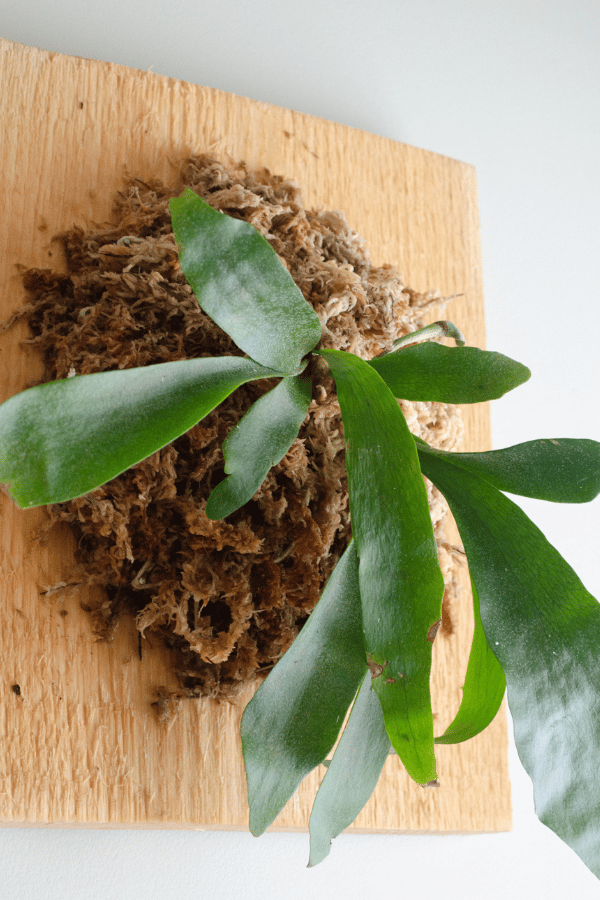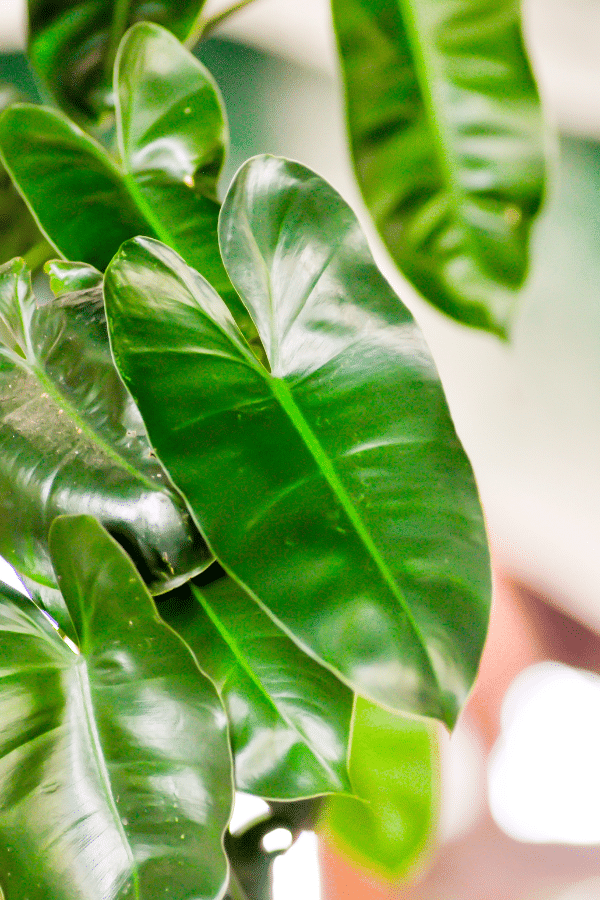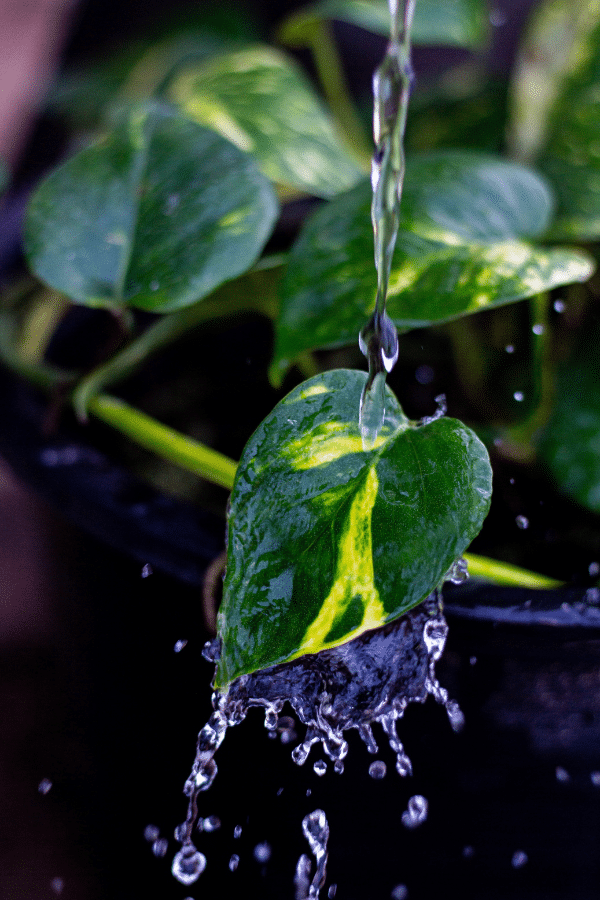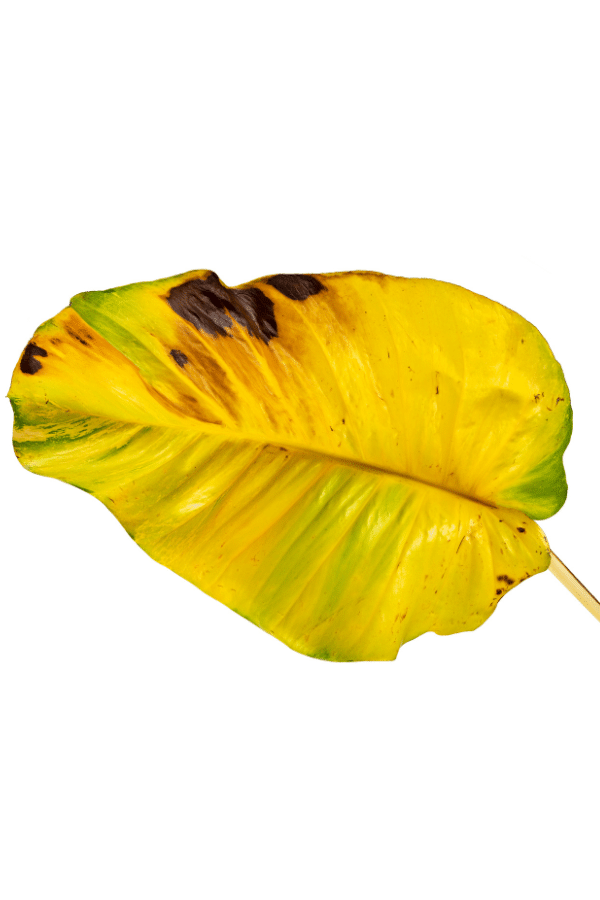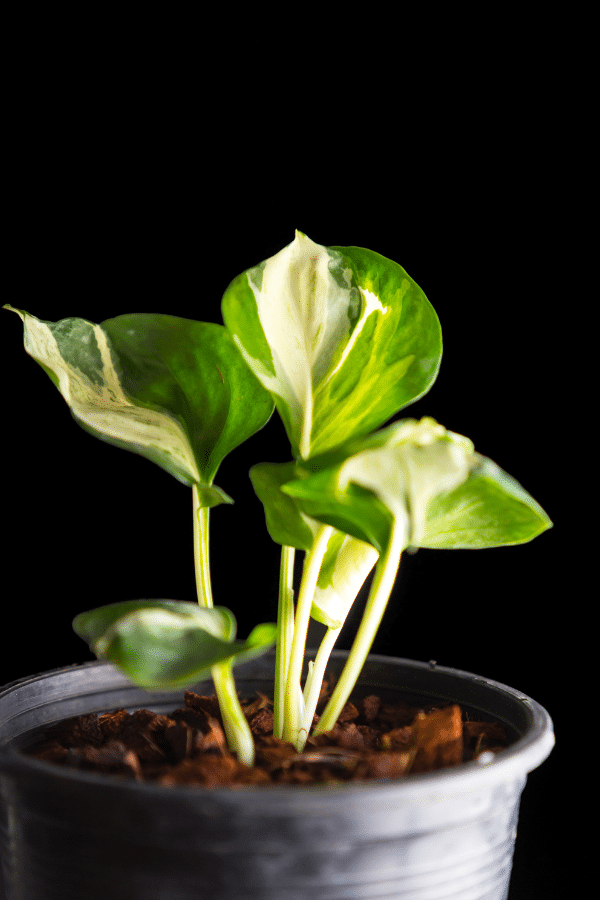Maranta Leuconeura
Scientific Name: Maranta Leuconeura
Maranta Leuconeura care is harder than other houseplants. This Maranta is not for a beginner. If you have experience with many houseplants and have grown many successfully and made them thrive, a Maranta Leuconeura plant may be for you if you are up for a challenge.
To give this Maranta plant the best care, it requires well-draining soil, keep the soil moist, provide it with bright indirect sunlight, temperatures ranging from 60-80F, and average to high humidity levels.
Quick Care Overview
| Common Name | Prayer Plant |
| Scientific Name | Maranta Leuconeura |
| Family | Marantaceae |
| Origin | Brazil |
| Growth Rate | Slow |
| Identification | Bright oval leaves with dark green spots and purple undersides |
| Height | Up to 12 inches tall |
| Soil | Well-draining soil |
| Water | Water when the top inch of soil has dried out |
| Temperature | 60-80F |
| Sunlight | Bright indirect sunlight |
| Toxic to Cats & Dogs | No |
| Toxic to Humans | No |
| Pests | Mealybugs, spider mites |
| Diseases | Root rot |
Below we will dive deep into this Maranta Leuconeura care guide.
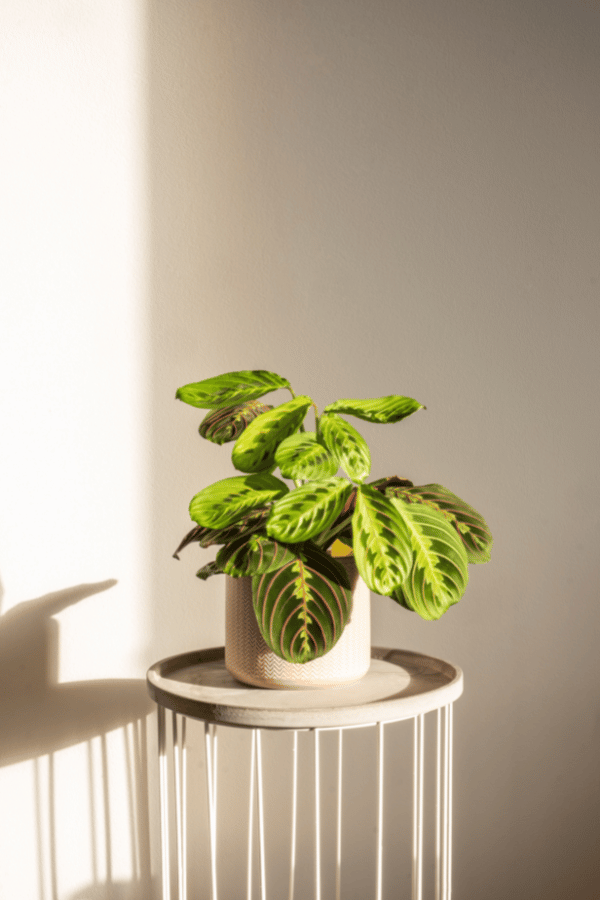
Maranta Leuconeura History
Brazilian native, Maranta Leuconeura, otherwise known as the prayer plant, herringbone plant, or cathedral windows, is a low-growing plant with foliage that stays flat during the day and folds up at night. The slow-growing prayer plant is one of the most popular decorative indoor houseplants available on the market. Maranta Leuconeura is named after 16th century Italian botanist and physician, Bartolomeo Maranta.
Maranta Leuconeura Identification
Prayer plants feature ovate, variegated foliage that begin to fold up at night from their daytime parallel position, resembling praying hands. Leaves are often deep green, with yellow patches down the midrib and feature red veins. Undersides of foliage is typically a green-gray to purplish green color. Prayer plants will bloom under proper conditions, but the plant is most coveted for its interesting foliage.
Maranta Leuconeura Growth Facts
This slow-growing, spreading tropical plant is not known to be easy to care for, or a good choice for beginning indoor gardeners. Although this is a quick-growing heavy feeder, it will remain relatively compact in size.
How Big Does a Maranta Leuconeura Get?
Maranta Leuconeura may grow up to 12 inches tall and 12 inches wide.
Maranta Leuconeura Care
Maranta Leuconeura is not considered to be a beginner’s plant. For the prayer plant to thrive, it will require plenty of humidity and warmth, as well as routine fertilization.
Maranta Leuconeura Soil
Prayer plants are not overly picky about soil, but they will like being grown in a loose, airy growing medium. You may make your own perfect potting mix by combining commercial potting mix with peat moss or coco coir, perlite, and coarse sand.
Maranta Leuconeura Fertilizer
You should fertilize your prayer plant regularly through the warm growing season of spring and summer. Fertilizer your prayer plant every two weeks with a diluted, balanced liquid fertilizer indicated for houseplants. Do not overfeed or feed in winter, as this may cause chemical burn due to excess salt buildup.
Maranta Leuconeura Watering
You should rewater your plant after the top inch of soil has dried. Never allow this plant’s soil to dry out completely. However, you should also never allow this plant to become soggy and oversaturated with water. Additionally, do not let your plant to sit in standing water within the plant container’s drainage tray.
Maranta Leuconeura Light Requirements
Maranta Leuconeura does best when grown in bright indirect light. You should never place your prayer plant in direct sunlight, as this may cause foliage to scorch. While Maranta Leuconeura will tolerate lower light conditions, it does best when given ample light to maintain growth.
Maranta Leuconeura Temperature & Humidity
Prayer plants like to remain in warm, very humid environments. It would be best if you strived to keep your Maranta Leuconeura between 60 to 80 degrees Fahrenheit at all times. Colder temperatures may cause damage to your plant. Additionally, your prayer plant will do best if kept in above-average humidity. Therefore, you should install a humidifier or pebble tray to allow your plant to thrive.
Repotting Maranta Leuconeura
You should repot your prayer plant every two to three years, or whenever you see roots peeking out from the container’s drainage holes. Select a container that is 1-2 inches larger than the previous container, repot your plant, refresh the soil, tamp lightly, water thoroughly, and place in indirect light.
Maranta Leuconeura Maintenance & Pruning
This fast-growing plant may be periodically pruned to keep its size in check and to maintain uniform growth. Regular pruning will encourage new growth. Use sharp, clean sterilized shears to prune your prayer plant.

Maranta Leuconeura Propagation
Propagation of prayer plants is easy. You may quickly propagate your prayer plant through division. To divide, loosen the mother plant from its container and work apart smaller offset plants. Then, plant those smaller plants into their own container, water them thoroughly, and place them in indirect light.
Maranta Leuconeura Toxicity
Toxicity to Humans
Maranta Leuconeura is not considered to be toxic to humans. However, it is still not considered edible and should not be ingested.
Toxicity to Cats & Dogs
Luckily, prayer plants are not considered to be toxic to cats or dogs. However, you still should avoid allowing your pet to consume this plant.
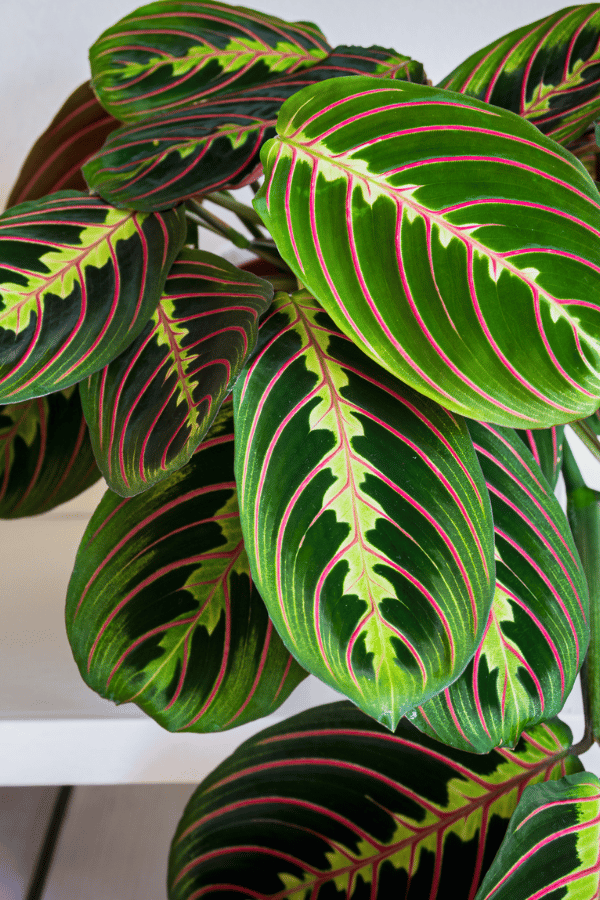
Maranta Leuconeura Problems
Maranta Leuconeura Leaves Turning Yellow
Yellowing foliage is often due to overwatering. Additionally, yellow foliage of your prayer plant may be due to large fluctuations in temperature.
Maranta Leuconeura Leaves Turning Brown
When the leaves of your prayer plant turn brown, it is typically due to leaf scorching from too much direct sunlight.
Maranta Leuconeura Diseases
Maranta Leuconeura is not known to be particularly prone to any diseases. However, as this plant loves to be kept moist and in high humidity, it may suffer from issues related to overwatering, such as root rot and fungal issues. Ensure that you do not oversaturate your plant with water or allow it to sit in standing water within the plant container’s drainage tray
Maranta Leuconeura Pests
Prayer plants can become infested by mealybugs or spider mites. Upon infestation identification, isolate your plant, and treat it with a pesticide, such as neem oil or insecticidal soap.

